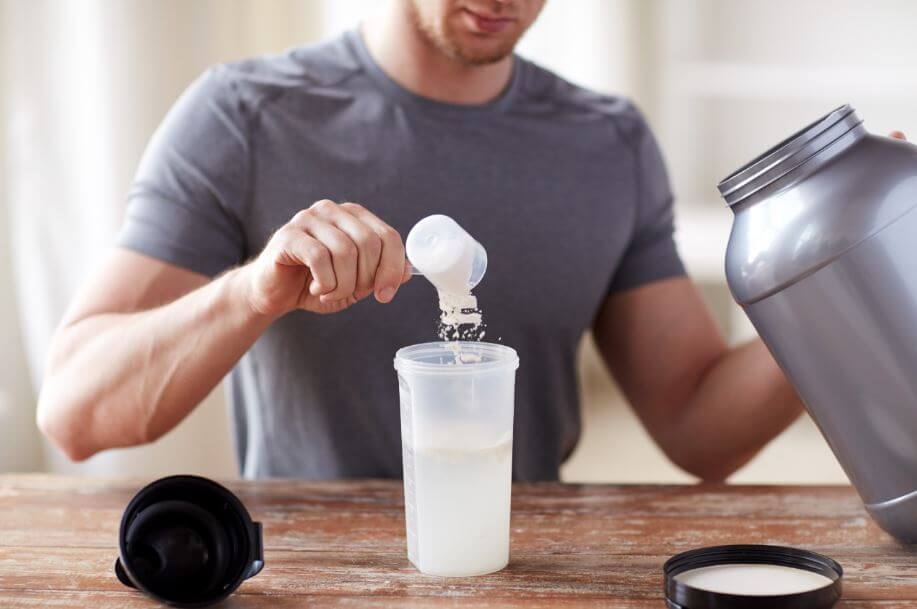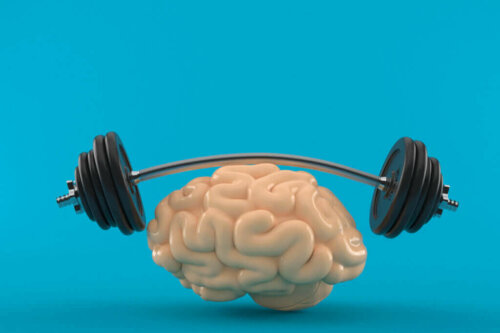Difference Between Sequential Protein and Casein

Proteins are the most important nutrient when it comes to athletes. Supplements that are rich in protein can be fundamental to reaching the objective of increasing your muscle mass and becoming more defined. Now, have you heard about sequential protein and casein?
The first thing you should know is that there are several different types of proteins. Selecting a specific type of protein should depend on your nutritional needs and physical activity. In this article, we’ll focus on sequential proteins and casein.
We’ve prepared a brief analysis in order to help you select the form of protein that’s best for you. It’s important to know what you’re ingesting and the best moments of the day to take your supplements. Read along to find out about boosting your performance without putting your health at risk.
Sequential protein
Sequential proteins are the result of the mixture of several types of protein including whey, egg, milk and soy protein. The main difference when it comes to this type of protein is the way the body absorbs it.
The absorption of sequential proteins occurs slowly. Therefore, they remain in the body for a long period of time. As a result, there are no peaks of high concentration.
It’s also important to keep in mind that sequential proteins stimulate muscle growth. That’s why they’re one of the most popular proteins when it comes to achieving muscle growth.
Sequential proteins also favor muscle recovery. If you want to perform several workouts a week this form of protein can be key to shortening resting times. You’ll be able to get back into shape and recover, allowing you to perform more routines in order to increase muscle mass.
You can find many products that contain sequential proteins in specialized stores. Keep in mind that it’s wise to seek advice from experts before trying new products. Experts will provide the most suitable advice for you by taking into account your objectives and physical conditions.

Casein
Unlike sequential proteins, casein is a protein powder that is rich in calcium. it’s absorbed slowly and the effects last for longer without causing high peaks.
Many athletes train for hours each week, after a while, they develop defined muscles and low body fat indexes. While it may be easy to achieve results, it’s a lot harder to maintain them. This phenomenon is known as muscular catabolism and casein can be a great ally to fight against it.
The sudden loss of muscle mass occurs due to a lack of essential nutrients. When there’s a lack of nutrients, muscles are consumed in order to produce energy to carry out everyday tasks.
Casein helps retain muscle mass for longer periods of time. It prevents muscle catabolism and provides the body with essential nutrients. That’s why, if you suffer from rapid muscle loss, casein may be perfect for you.
Another positive characteristic of casein is that it promotes the effective burning of fat. In addition to defining and increasing muscle mass, casein can also help you burn fat. It’s sometimes advisable to use casein during the first months of training until excess fat is lost.

Conclusion
Now that you know the characteristics of the two main types of proteins, you can now choose the one that best suits your needs. In any case, it’s always best to consult a professional. Experts will be able to provide you with the most appropriate products based on your physical condition and goals.
Always remember that supplements should be taken as instructed, and never exceed the recommended amount. If you abuse supplements, it’ll cancel out all of the efforts you’re putting in.
Proteins are the most important nutrient when it comes to athletes. Supplements that are rich in protein can be fundamental to reaching the objective of increasing your muscle mass and becoming more defined. Now, have you heard about sequential protein and casein?
The first thing you should know is that there are several different types of proteins. Selecting a specific type of protein should depend on your nutritional needs and physical activity. In this article, we’ll focus on sequential proteins and casein.
We’ve prepared a brief analysis in order to help you select the form of protein that’s best for you. It’s important to know what you’re ingesting and the best moments of the day to take your supplements. Read along to find out about boosting your performance without putting your health at risk.
Sequential protein
Sequential proteins are the result of the mixture of several types of protein including whey, egg, milk and soy protein. The main difference when it comes to this type of protein is the way the body absorbs it.
The absorption of sequential proteins occurs slowly. Therefore, they remain in the body for a long period of time. As a result, there are no peaks of high concentration.
It’s also important to keep in mind that sequential proteins stimulate muscle growth. That’s why they’re one of the most popular proteins when it comes to achieving muscle growth.
Sequential proteins also favor muscle recovery. If you want to perform several workouts a week this form of protein can be key to shortening resting times. You’ll be able to get back into shape and recover, allowing you to perform more routines in order to increase muscle mass.
You can find many products that contain sequential proteins in specialized stores. Keep in mind that it’s wise to seek advice from experts before trying new products. Experts will provide the most suitable advice for you by taking into account your objectives and physical conditions.

Casein
Unlike sequential proteins, casein is a protein powder that is rich in calcium. it’s absorbed slowly and the effects last for longer without causing high peaks.
Many athletes train for hours each week, after a while, they develop defined muscles and low body fat indexes. While it may be easy to achieve results, it’s a lot harder to maintain them. This phenomenon is known as muscular catabolism and casein can be a great ally to fight against it.
The sudden loss of muscle mass occurs due to a lack of essential nutrients. When there’s a lack of nutrients, muscles are consumed in order to produce energy to carry out everyday tasks.
Casein helps retain muscle mass for longer periods of time. It prevents muscle catabolism and provides the body with essential nutrients. That’s why, if you suffer from rapid muscle loss, casein may be perfect for you.
Another positive characteristic of casein is that it promotes the effective burning of fat. In addition to defining and increasing muscle mass, casein can also help you burn fat. It’s sometimes advisable to use casein during the first months of training until excess fat is lost.

Conclusion
Now that you know the characteristics of the two main types of proteins, you can now choose the one that best suits your needs. In any case, it’s always best to consult a professional. Experts will be able to provide you with the most appropriate products based on your physical condition and goals.
Always remember that supplements should be taken as instructed, and never exceed the recommended amount. If you abuse supplements, it’ll cancel out all of the efforts you’re putting in.
All cited sources were thoroughly reviewed by our team to ensure their quality, reliability, currency, and validity. The bibliography of this article was considered reliable and of academic or scientific accuracy.
- Dilac. (2013). Caseína. Journal of Chemical Information and Modeling, 53, 87. https://doi.org/10.1017/CBO9781107415324.004
- Solis, A. (2010). Proteínas : Leche y caseína. Proteinaleche y Caseina.
- Martínez, I. (2014). Aminoacidos Y Proteinas. Bioquímica Práctica, 55. Retrieved from http://depa.fquim.unam.mx/amyd/archivero/Unidad_2_Aminoacidos,_peptidos_y_proteinas_1887.pdf
This text is provided for informational purposes only and does not replace consultation with a professional. If in doubt, consult your specialist.








